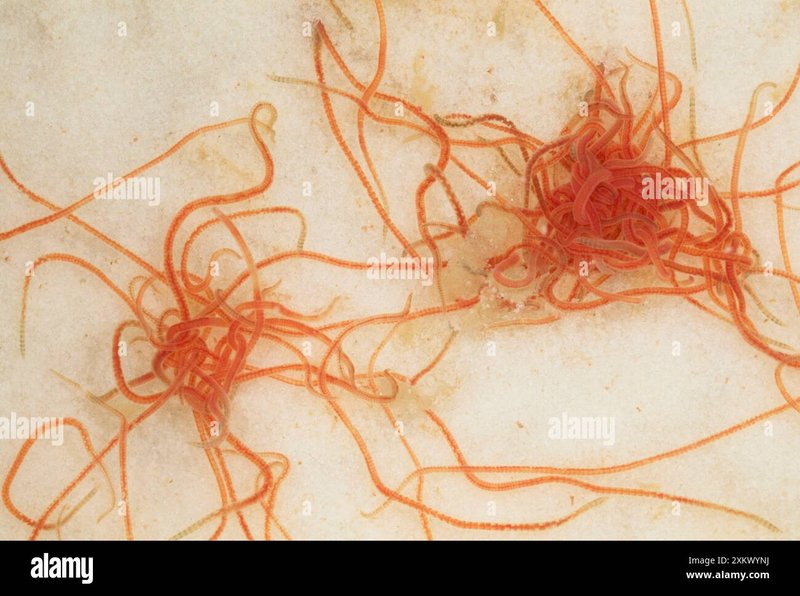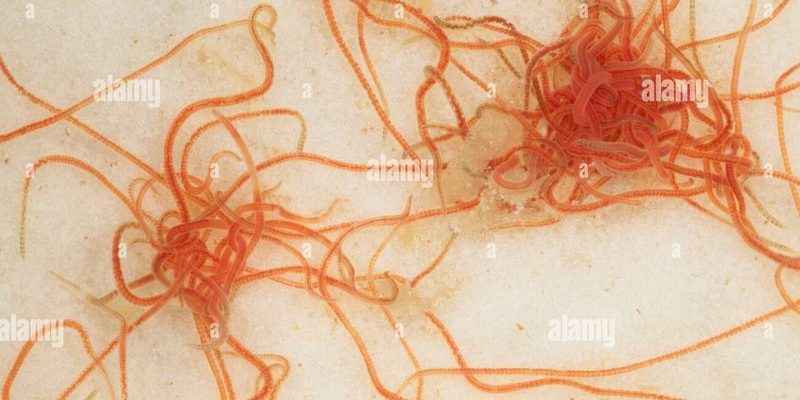
Let’s dive into the muddy waters of worm comparison! Think of it like a worm family reunion, where we meet not just Tubifex but also other relatives, like bloodworms and earthworms. By understanding how these creatures differ, we can appreciate their unique roles in their habitats and even learn a bit more about our environment.
What is a Tubifex Worm?
Tubifex worms, often referred to as sludge worms or tubifex, are part of the family Tubificidae. They thrive in anaerobic conditions, which means they can live in environments without much oxygen—think of the mucky bottom of a pond or a stagnant marsh. They usually measure between 1 to 4 inches long and have a pinkish or reddish hue.
These worms play a crucial role in their ecosystem. Tubifex worms feed on organic material, breaking it down and recycling nutrients back into the water. This process helps keep aquatic environments healthy. Imagine them as the unheralded heroes of the pond, working tirelessly beneath the surface.
You might be wondering how someone could even find these worms, right? Well, if you’re fishing or just exploring a pond, a quick dig into the muddy bottom can often reveal them wriggling about. They often show up in clusters, which adds to the intrigue of discovering them.
Bloodworms: The Lookalikes
Next up, let’s chat about bloodworms, which are another type of worm you might stumble upon in similar habitats. Unlike Tubifex worms, bloodworms are actually the larval stage of a type of midge called the Chironomidae. They can grow a bit larger, reaching up to 4 inches long, and they have a vibrant red hue, thanks to their high levels of hemoglobin. This gives them a unique appearance, almost like they’re on a blood-red mission!
So, what’s the deal with their habitat? Just like Tubifex worms, bloodworms can be found in nutrient-rich environments, particularly in muddy or stagnant waters. However, bloodworms prefer a bit more oxygen than Tubifex, which makes them a little less adaptable to super anoxic conditions. They’re often found in places with more water movement, where they can still thrive.
Using bloodworms as bait is common among fishermen because their striking color attracts various fish species. Because they’re not as hardy as Tubifex worms in low-oxygen environments, they often hint at where the water is cleaner and more active.
Earthworms: The Uplanders
When we shift our gaze from aquatic worms to their land-dwelling cousins, earthworms come into play. These familiar worms are often seen wriggling on sidewalks after a rainstorm and are vital for soil health. Earthworms typically thrive in well-aerated, nutrient-rich soil, playing an essential role in enhancing soil quality.
Unlike Tubifex worms, which prefer wet, low-oxygen environments, earthworms need oxygen-rich soil to breathe. They also help decompose organic matter, turning leaves and debris into nutrient-rich soil through their digestive systems. In many ways, they share a similar goal with Tubifex worms: recycling nutrients to maintain healthy ecosystems.
You might think of earthworms as the gardeners of the soil, whereas Tubifex worms are the janitors of the pond. Each is crucial to their respective environments but plays a different role that underscores the importance of biodiversity.
Comparing Habitats: Where Do They Thrive?
Each of these worm species has its own habitat preferences, which is fascinating when you think about it. While Tubifex worms love the mucky, low-oxygen areas of ponds and marshes, bloodworms prefer slightly cleaner, more oxygenated waters. Earthworms, on the other hand, thrive in rich, well-drained soils that are abundant in organic matter.
– Tubifex Worms: Thrives in anaerobic conditions, often found in muddy, stagnant waters.
– Bloodworms: Found in cleaner, oxygen-rich waters; cater to a slightly higher oxygen demand.
– Earthworms: Prefers well-drained, aerated soils; they’re the soil specialists!
Understanding these habitat differences helps to illuminate how each species fits into its ecosystem puzzle. They coexist, yet their specific preferences allow them to minimize competition for resources.
The Importance of Biodiversity
You’ve probably noticed a theme by now: each of these worms plays a vital role in their ecosystems. Biodiversity is crucial because it enables different organisms to interact with one another, contributing to the overall health of an ecosystem. Tubifex worms, bloodworms, and earthworms each provide unique services, from breaking down organic matter to improving nutrient availability.
If one species were to disappear, it could disrupt this delicate balance. For example, without Tubifex worms, nutrient cycling in stagnant waters could slow down, potentially leading to water quality issues. Similarly, a drop in earthworm populations could negatively impact soil health, affecting plant growth and, consequently, the entire food chain.
More and more, scientists are realizing how intertwined these species are in maintaining equilibrium in their habitats. It’s like a well-orchestrated symphony—remove one musician, and the entire performance could fall flat.
When you take a moment to delve into the world of worms, it’s hard not to appreciate the unique roles each species plays in its environment. The Tubifex worm, with its knack for thriving in murky waters, stands out as a key player among similar species. By comparing it to bloodworms and earthworms, we can see just how diverse and ecological niches can simultaneously exist.
So, the next time you find yourself near a pond or garden, take a minute to think about these slimy friends working behind the scenes. They’re not just puddles of goo; they’re essential to healthy ecosystems. Understanding their differences and similarities can deepen your appreciation for nature and the little things that often go unnoticed.

